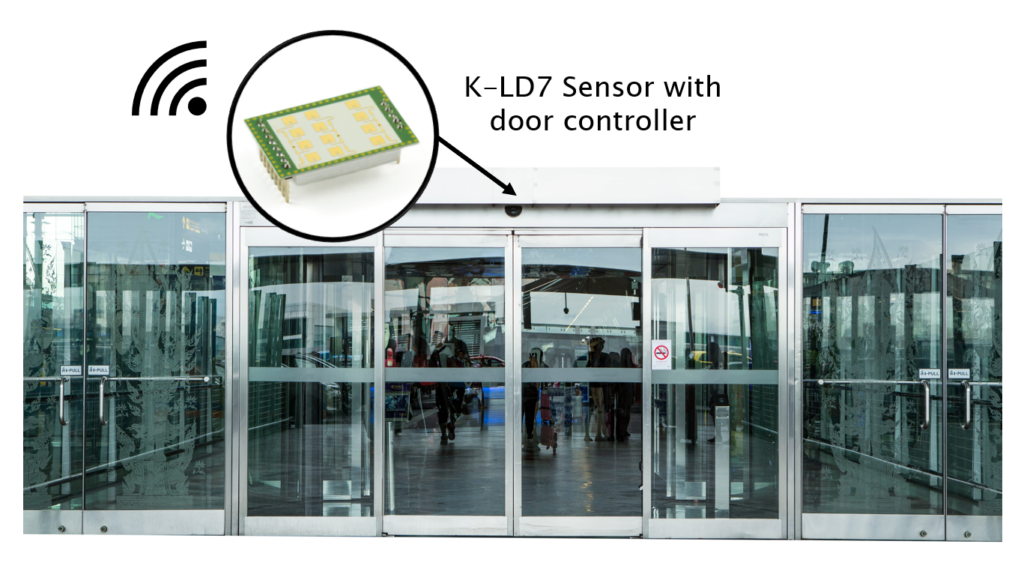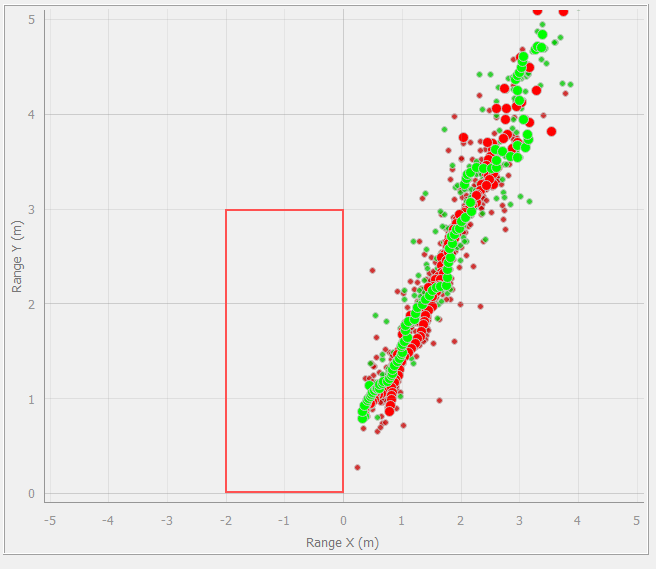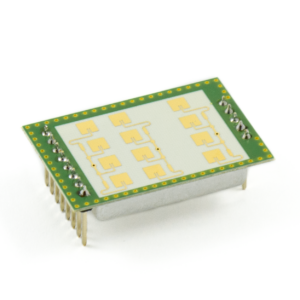
The introduction of the K-LD7 radar marks a significant advancement in the realm of sensors for automatic doors. This new technology offers features that address modern energy-saving demands in large buildings. Automatic door systems, such as sliding and swing doors, have traditionally faced challenges related to energy inefficiency. In many cases, these systems lead to unnecessary loss of heating and cooling energy, thereby increasing both the carbon footprint and operational costs of buildings.
The Challenge of Energy Efficiency
Automatic entrance doors are crucial for ensuring seamless access in high-traffic areas like airports, train stations and hotels. However, traditional sensor solutions often result in extended hold-open times, averaging ten seconds. Given that 80% of users pass through a door in less than four seconds, this results in an average of six seconds of wasted time and energy.
To address this issue it is imperative that automatic doors are designed to open only as long as necessary, accommodating various pedestrian speeds. This focus on energy efficiency is now a key selling point for automatic doors, prompting a shift in sensor technology requirements.
Advancements with K-LD7 Radar Sensor
Prior to the K-LD7 radar, door sensors simply provided an electronic or relay output signal upon detecting movement. Today the movement of persons are analyzed before the decision of opening the automatic door.
The K-LD7 radar transmits information regarding the speed and position of objects within its detection zone to the door controller. Depending on speed and position information, the door controller can decide when to open the door. Using the fastest speed range the information about speed and position can be transmitted every 33 ms.
This allows the door to open only as long as necessary: earlier for fast-moving individuals and later for slower ones. This dynamic adjustment reduces unnecessary open time, leading to significant energy savings while maintaining efficient access.

Above plot shows the speed, range and angle information coming from the K-LD7 with range setting 3 together with a XY plot generated from the position data when a person approaches the radar under 45 degrees, stops in front of the radar and walks back. Approaching detections shown in red.
Enhancing Energy Savings with Cross Traffic Suppression
The K-LD7 radar also offers advanced cross traffic suppression features. In high-traffic environments, such as streets with numerous shops, most pedestrians are merely passing by, while only a few are entering the shop.

Above plot shows raw data of a cross traffic movement at a 2-meter distance from the door. The plot depicts a person passing by the door and then returning.
By analyzing movement vectors from past samples, the door controller can determine whether an individual is likely to enter the building or simply pass by. The door will not be opened for persons just passing by, and even more energy is saved.
Customizable Detection Fields
The K-LD7 radar’s flexibility extends to customizable detection fields. By combining the raw position data with detection fields, any detection area can now be realized. A door sensor can be pre-configured in this way with various detection field shapes, including asymmetric or L-shaped fields. This customization simplifies sensor setup and reduces service costs.

Example of an asymmetric detection field. The plot shows how objects approaching from the left side are excluded from detection, allowing for more precise control over the door’s activation.
Additional Applications and Benefits
Beyond energy efficiency, the K-LD7 radar allows for new functionalities such as counting people passing through or approaching the door. This data can be valuable for marketing and maintenance purposes. Unlike video sensors, radar-based detection maintains user privacy while providing accurate traffic counts.
Conclusion
The K-LD7 radar represents a major leap forward in sensor technology for automatic doors. By incorporating advanced features such as speed-dependent opening times, cross traffic suppression, and customizable detection fields, the K-LD7 not only enhances energy efficiency but also reduces service costs and offers valuable data insights.

